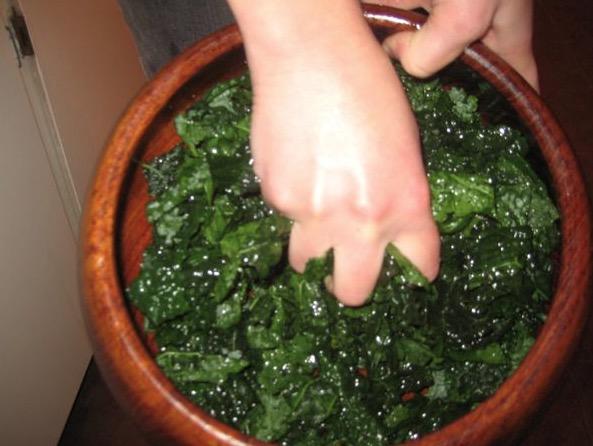At a country club somewhere in Greenwich, Connecticut...
Father: "Junior, I'm so proud of you. Between your 3.95 GPA from Princeton and clerking for two different Supreme Court Justices, the world of law is yours for the taking. I've been thinking about schools. It simply has to be either Yale or Harvard.
Between my legacy preference at Yale and shanking just enough tee shots so that the damn dean can beat me by a stroke or two most days, you're a shoo-in there. And do you remember our senior partner Chester? The guy with the 26-year old wife who gave your sister the powder blue Mercedes for her coming out?
Well, as it turns out, the old boy sails in the America's Cup with the president of Harvard, who owes me big time for getting his alky daughter's 0.21 DUI knocked down to a misdemeanor. So, you can write your own ticket there as well. Uh, would you mind straightening your Ascot? People are staring."
Junior: "Dad. I've decided to become a kale massager."
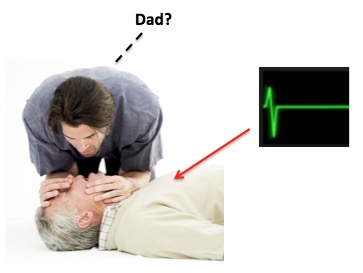
Dad apparently was not pleased with Junior's choice of career paths
Photo: CPR Test
Well, as soon as Chester helicopters back from Southhampton he's gonna have to do some executive recruiting, and fast, because Father is indeed, seriously dead. And Junior, although fatherless, is now free to fulfill his (current) life's dream of becoming a kale massager, which, indeed, is an actual job, as shown, on, well, Indeed. Think of the advantages of such a profession!
Well, that was a lie. There really aren't any. The job sucks. But Junior doesn't really care. With Dad in the early stages of a very long dirt nap, sister Penelope (now Peter) feverishly trying to deplete the world's supply of X while living in a Burning Man bus commune, and Mother (Mims to her friends) pre-nupped out of luck (The tennis instructor? Seriously? Appallingly unoriginal), he's looking at some mighty serious coin and can massage whatever the hell he wants. This causes Junior to contemplate life:

Junior contemplates life
At which point he concludes that maybe things ain't so bad after all...

Junior in the process of establishing priorities
Since this is article is (nominally) about science, it's a damn good thing that there really is some. Prepare yourself for a "tale of kale" chemistry lesson, where you will learn how to convert an inedible, vile abomination into a slightly less inedible, vile abomination.
One (of many) reasons that kale is so nasty if that it is full of cellulose, which is indigestible, unlike its very close chemical cousin starch. Why? In order to find out, you will need to stick around for.... the Dreaded Chemistry Lesson!!! Don't blame me. You guys keep requesting them.
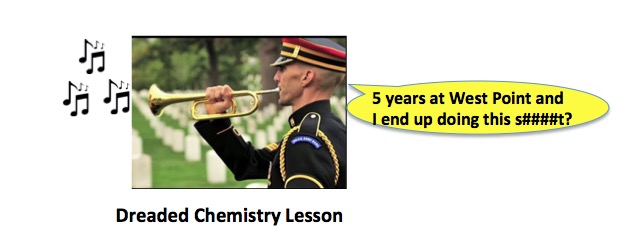
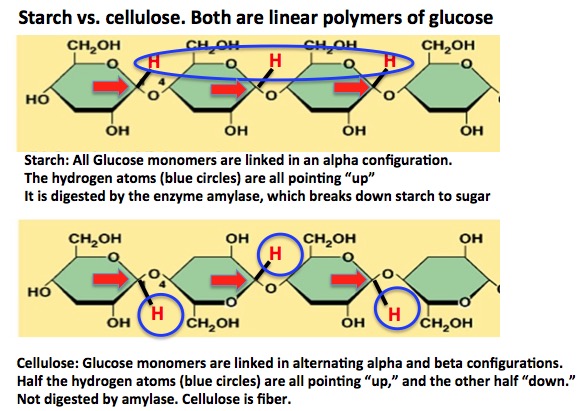
Dreaded chemistry lesson
Starch and cellulose are almost chemically identical. Both are long polymers consisting of repeating glucose units. But there is a subtle but important difference between the two, and it has to do with how the glucose units are bonded together. Glucose molecules can be attached to each other in one of two ways. (The red arrows indicate the carbon where the attachment takes place. It is called the anomeric carbon.) One type of bonding is called the alpha configuration, where the hydrogen atoms (blue oval) at the anomeric carbon are all pointed in the same direction - "up." In starch, all of the individual glucose molecules are bound to each other in the alpha configuration.
But cellulose is put together differently. You can see (blue circles) that the chain of repeating glucose units contains alternating alpha and beta types of bonds. This may seem like a trivial change, but biochemically it is anything but. Amylase, the enzyme that readily breaks down starch does not touch cellulose (1), so it passes through the digestive system unchanged. Cows and other ruminants can digest cellulose (2), so cows can eat raw kale. But that doesn't mean that they should.
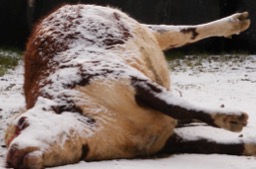
Bessie, the kale eating cow. Her life came to an early, tragic end.
So, if the point of this idiotic piece is to scientifically explain why kale gets massaged at all, then a peek at a 2012 Los Angeles Times article comes in handy:
"Kale is about as unlikely a food star as you can imagine. It's tough and fibrous. Bite a piece of raw kale and you'll practically end up with splinters between your teeth."
Well, if that doesn't explain its popularity, what does?
"Nevertheless, kale has become a green of the moment because, given a little special care, it actually can be made not only edible but delicious."
The "green of the moment" typically starts in pretentious restaurants on Manhattan's Upper West Side. I scrupulously avoid them. Plus, this damn place doesn't pay me enough to eat on the Upper West Side, especially since there isn't a Chuck E. Cheese there.
"Though kale leaves have always been found on almost every salad bar, it wasn't for reasons of edibility — it was for decoration because this was one green so tough it would last forever without wilting."
So is asbestos.
"But the solution is remarkably simple: Give it a massage. Yes, seriously. And I mean a real massage — a deep-tissue bone-breaker. It won't take very long — just a couple of minutes — but you'll be amazed at the difference. That tough cellulose structure breaks down — wilts, actually — and those leaves that once seemed so coarse and fibrous turn silky."
So, I wasn't making this up, right?? When Junior gets tired of lap dances and Jello Shots on his yacht, he can actually make a valuable contribution to society! But why would just massaging the stuff make a difference? Again, chemistry. This time, biochemistry.
Plain old stinky non-messaged kale has different cellular compartments which contain separate chemicals and enzymes. This effect is known as the glucosinolate-myrosinase defense system, which serves to protect the plant from being eaten by animals and insects. Here's how it works.

As long as the glucosinolates and myrosinase in plant cells are stored separately nothing happens. But when the cell structure is disrupted, the two components mix and a rapid reaction occurs. This is a very clever piece of botanical-chemical evolution. If plants that contain the glucosinolate-myrosinase defense system are bitten (or massaged) the compartments break open and the components mix. The ensuing enzymatic reaction breaks the carbon-sulfur bond that holds the sulfur and nitrogen portion of the glucosinolate (red oval).
Once freed, the chemical fragment inside the red oval spontaneously breaks down, decomposing to a number of sulfur-containing volatile chemicals, which are released. They are foul smelling and toxic. The simplest isothiocyanate is methyl isothiocyanate, and it is not something you want to fool around with (3). It is toxic as hell and also has a nasty onion-like odor. Here are some safety data for the stuff:
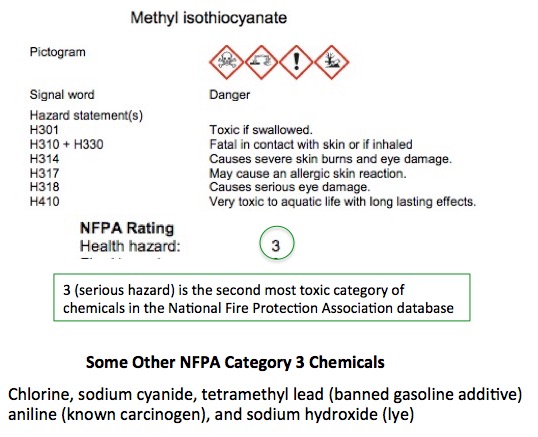
It is not too difficult to see why kale's defense system works. All you need to do is rough it up a bit, which is why you have to massage the wretched stuff - to help it digest itself so you can eat it. Or perhaps there are some better suggestions what to do with it:
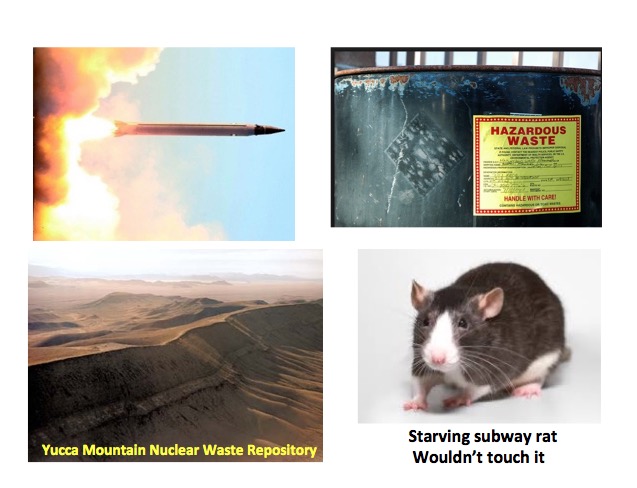
So, if you really want to be a kale massager, don't let me stop you. It just might not be as wonderful as it sounds.
There is no happy ending.
Notes:
(1) If cellulose was broken down by amylase the world's food supply would be vastly greater. Wood would be edible.
(2) It is not the animals themselves that are able to digest cellulose, but rather, microorganisms called cellulases, which are found in the gut.
(3) If you're wondering why the chemicals in kale aren't killing you, even though they are FAR more toxic than anything you'll probably ever encounter, then you're not reading enough American Council stuff. (Hint: it's about the dose)
